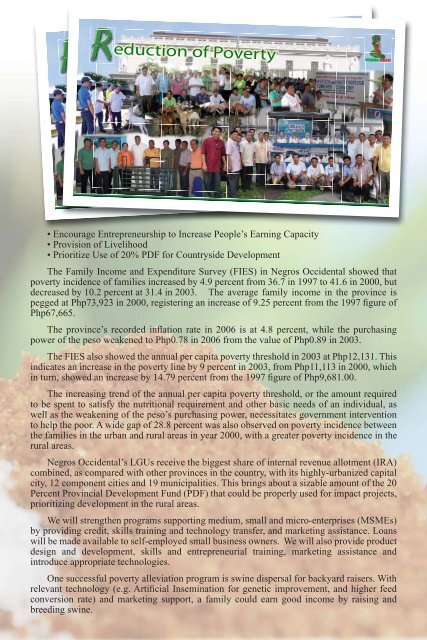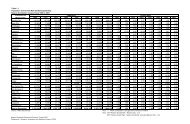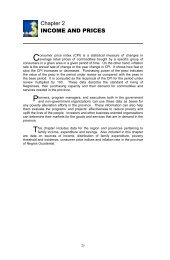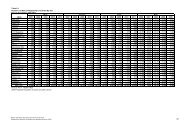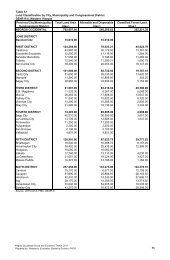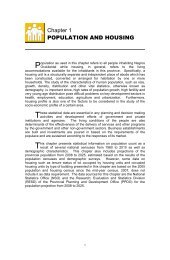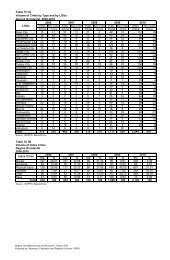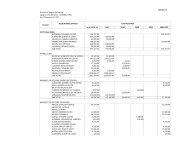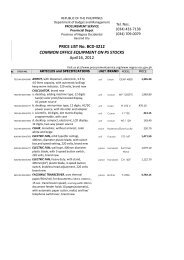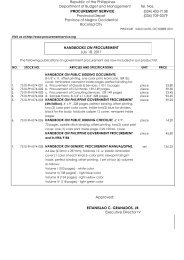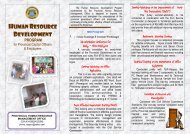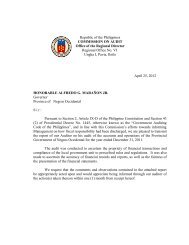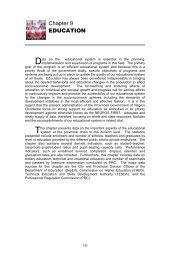DIRECTORY 2011 Edited 4-11.indd - Negros Occidental
DIRECTORY 2011 Edited 4-11.indd - Negros Occidental
DIRECTORY 2011 Edited 4-11.indd - Negros Occidental
Create successful ePaper yourself
Turn your PDF publications into a flip-book with our unique Google optimized e-Paper software.
eduction of Povertyeduction of fP Poverty• Encourage Entrepreneurship to Increase People’s Earning Capacity• Provision of Livelihood• Prioritize Use of 20% PDF for Countryside DevelopmentThe Family Income and Expenditure Survey (FIES) in <strong>Negros</strong> <strong>Occidental</strong> showed thatpoverty incidence of families increased by 4.9 percent from 36.7 in 1997 to 41.6 in 2000, butdecreased by 10.2 percent at 31.4 in 2003. The average family income in the province ispegged at Php73,923 in 2000, registering an increase of 9.25 percent from the 1997 gure ofPhp67,665.The province’s recorded ination rate in 2006 is at 4.8 percent, while the purchasingpower of the peso weakened to Php0.78 in 2006 from the value of Php0.89 in 2003.The FIES also showed the annual per capita poverty threshold in 2003 at Php12,131. Thisindicates an increase in the poverty line by 9 percent in 2003, from Php11,113 in 2000, whichin turn, showed an increase by 14.79 percent from the 1997 gure of Php9,681.00.The increasing trend of the annual per capita poverty threshold, or the amount requiredto be spent to satisfy the nutritional requirement and other basic needs of an individual, aswell as the weakening of the peso’s purchasing power, necessitates government interventionto help the poor. A wide gap of 28.8 percent was also observed on poverty incidence betweenthe families in the urban and rural areas in year 2000, with a greater poverty incidence in therural areas.<strong>Negros</strong> <strong>Occidental</strong>’s LGUs receive the biggest share of internal revenue allotment (IRA)combined, as compared with other provinces in the country, with its highly-urbanized capitalcity, 12 component cities and 19 municipalities. This brings about a sizable amount of the 20Percent Provincial Development Fund (PDF) that could be properly used for impact projects,prioritizing development in the rural areas.We will strengthen programs supporting medium, small and micro-enterprises (MSMEs)by providing credit, skills training and technology transfer, and marketing assistance. Loanswill be made available to self-employed small business owners. We will also provide productdesign and development, skills and entrepreneurial training, marketing assistance andintroduce appropriate technologies.One successful poverty alleviation program is swine dispersal for backyard raisers. Withrelevant technology (e.g. Articial Insemination for genetic improvement, and higher feedconversion rate) and marketing support, a family could earn good income by raising andbreeding swine.


